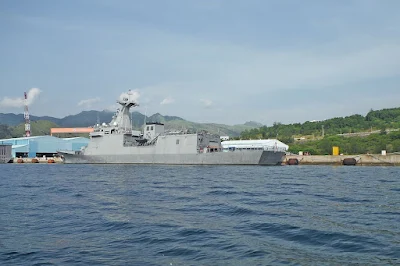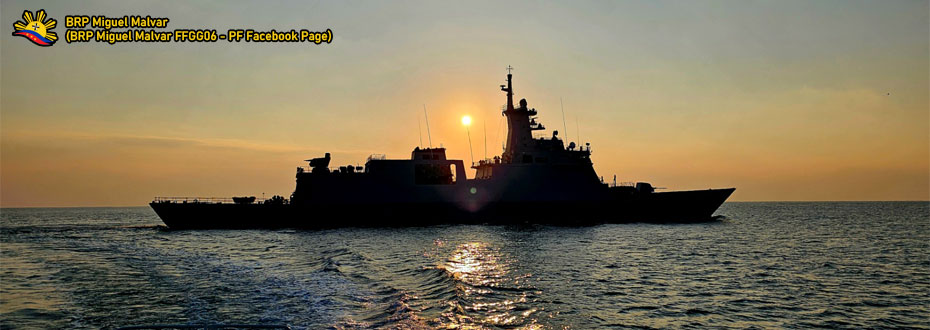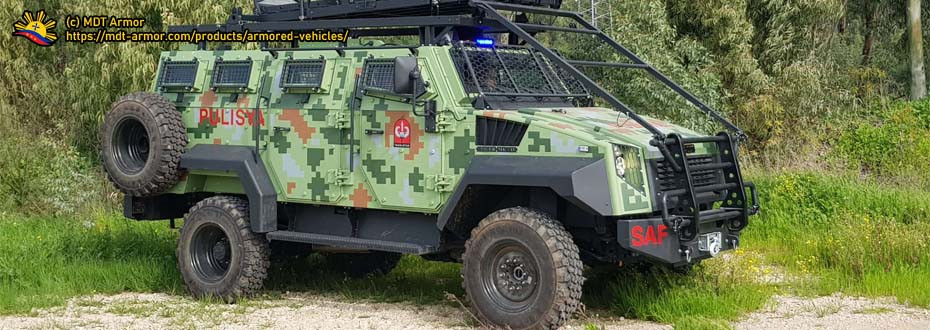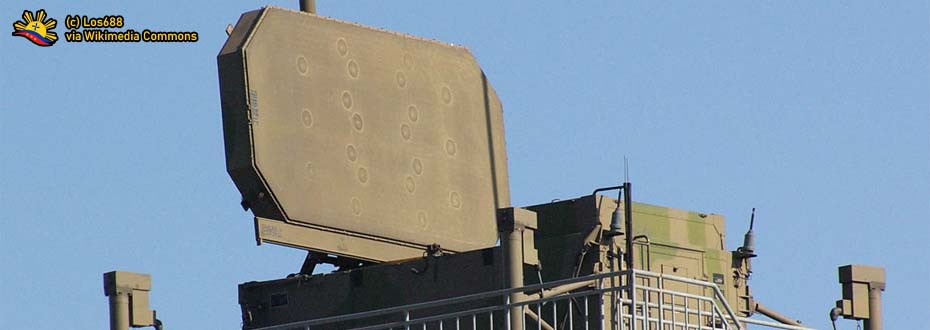The South Korean shipbuilder Hyundai Heavy Industries is notable in securing at least three of the Philippine Navy's acquisition projects, as these contracts come with at least ten (10) warships, with eight (8) of those vessels still in the process of either in the finalization of critical design review to at least the actual construction process of the vessels.
This makes it viable for the shipbuilder to set up shop in the country, specifically a facility that can cater not only the warships that the Philippine Navy ordered but also serve as a potential facility that may actually produce warships if the naval service branch opts for adding more warships into its fleet.
INTRODUCTION
 |
A Jose Rizal-class Frigate moored in the Philippine Navy's Operating Base Subic, which itself was once part of the former Hanjin Heavy Industries and Constructions shipyard.
Image Source. |
South Korea's HD Hyundai Heavy Industries is now opting to have a maintenance, repair, and overhaul (MRO) facility inside what is now called the Agila Shipyard in Subic, itself once known as the facility of another South Korean shipbuilding firm, the Hanjin Heavy Industries and Construction or HHIC.
This comes as the HD Hyundai Heavy Industries' market share in the Philippine Navy naval market increases with the current warship production contract it has with the Armed Forces of the Philippines' naval service branch.
This refers to the ongoing construction of both the Offshore Patrol Vessels, itself being an HDP-2200+ derivative that comes with at least six (6) units, and the Corvette Acquisition Project, itself being an HDF-3100 variant or also known as an improved variant of the Jose Rizal-class Frigates (image above), of which both the HDF-3100 and the Jose Rizal-class Frigates comes with a pair of warships each.
The two acquisition projects, on top of the Frigate Acquisition Project that made the Jose Rizal-class Frigates that are also built by Hyundai Heavy Industries, makes it viable for HD Hyundai Heavy Industries to have a maintenance repair and overhaul facility in Subic, near the Philippine Navy's Operating Base Subic, within the Agila Shipyard facility that both entities leased from Cerberus-Agila, the owner of the facility.
Hyundai Heavy Industries sees this MRO facility approach as an opportunity to secure not only its support for the 10 Philippine Navy warships that it produces, but also to give a potential leverage as an active shipbuilding facility that will cater not only the usual civilian customers that have come with the former Hanjin Heavy Industries and Construction, but also for any future Philippine Navy warship projects that potentially gets awarded to the South Korean shipbuilder to produce in their Subic facility.
This means that this gives a potential for Hyundai Heavy Industries into contributing not only to the local economy of Subic and its environs but also to revitalize the country's shipbuilding industry either to the former glory that Hanjin has provided or may even go further than that, as this will surely give employment for the local citizenry in the area and the Philippine Navy may get a set of warships that are made by Filipinos.
RECALLING THE WARSHIPS PHILIPPINE NAVY HAS BOUGHT FROM HYUNDAI
 |
The HDC-3100 Corvette pair are just one of many warships that the Philippine Navy has bought from South Korea's HD Hyundai Heavy Industries.
Image (c) Hyundai Heavy Industries. |
The rationale behind the HD Hyundai Heavy Industries' plan for having a maintenance repair overhaul facility in Subic Bay's Agila Shipyard is not complete without recalling the orders made by the Philippine Navy, spanning at least three warship acquisition projects, with the potential that it may get added later on as Horizon 3 still has a requirement for an additional pair of Frigates or Corvettes, with finality subject to the decisions of the leadership and, as usual, subject to the availability of funds.
First project in this category is the Philippine Navy's Frigate Acquisition Project, with its byproducts now counted as the Jose-Rizal class Frigates. It comes with two warships of this class, namely the BRP Jose Rizal (FF-150) and BRP Antonio Luna (FF-151). Currently, both warships count as the most sophisticated ones that the naval service branch has in its active duty, until this next project gets commissioned into the service.
This next acquisition project refers to the currently materializing Corvette Acquisition Project, with its design being the HDC-3100 Corvettes (see image above) which is an improvement over the Jose Rizal-class Frigates or known in the design number of Hyundai Heavy Industries as the HDF-2600 Frigates. This comes with a dedicated CIWS battery, four more additional SSM-700K Haeseong anti-ship missiles than the Jose Rizal-class, and a 16-cell VLS system that the current warships don't have at the time this article has written.
In totality, the after-sales support commitment of Hyundai Heavy Industries will span for at least three acquisition projects of the Philippine Navy, totalling at least ten warships. Add also to this any future prospects that will let Hyundai Heavy Industries use this part of Agila Shipyard they leased from Cerberus not only as a maintenance repair and overhaul or MRO platform but also as a potential facility for the construction of future Philippine Navy ships if the leadership opts into Hyundai Heavy Industries for its future orders.
THE FORMER HANJIN HEAVY INDUSTRIES AND CONSTRUCTION (HHIC)
 |
Agila Shipyard, once known as Hanjin Heavy Industries and Construction Shipyard in Subic.
Image Source. |
The current Agila Shipyard (image above), once known as the facility of Hanjin Heavy Industries and Construction, was the largest shipyard ever operated in the Philippines, itself established in 2006 with its primary customers being large shipping companies that are looking after their container ship vessels, bulk carriers, and large tanker vessels.
This ranks the Philippines among the top ranking shipbuilding nations in the world, as this industry employs thousands of Filipino workers, which itself also means feeding and sustaining thousands of Filipino families of these workers that are employed in any of the shipbuilding companies in the country, including the once-existed Hanjin Heavy Industries and Construction.
One of those commercial vessels that the Hanjin shipyard in Subic has built for international customers is the CMA-CGM Antoine de Saint Exupery, a 20,600 TEU (twenty-foot container equivalent unit) container ship that comes with 400 meters overall length, 59 meters in beam, and 33 meters in depth.
In comparison, the Tarlac-class Landing Platform Docks only comes with 123 meters length and 22 meters beam, making the Agila Shipyard's facility viable for both maintenance and any future prospects for both naval ship and civilian ship production by Hyundai.
The capacity of the shipyard facilities left by Hanjin Heavy Industries and Construction may help its compatriot HD Hyundai Heavy Industries expand not only on any of its future warship business in the Philippine Navy, but also bringing back the former shipbuilding essence with the existing facility.
This move will generate more jobs back to provide services for production of warships and also to maintain existing vessels that the Philippine Navy fleet bought from the South Korean shipbuilder.
BENEFITS TO THE PHILIPPINE SHIPBUILDING
 |
With the MRO facility made by Hyundai Heavy Industries in Subic Bay, warships like the BRP Jose Rizal may no longer need to go to South Korea for its maintenance repair and overhaul process.
Image Source. |
The recent move made by HD Hyundai Heavy Industries by opening both a maintenance repair and overhaul facility that serves Philippine Navy ships they’ve built, along with their plans of getting some of the Agila Shipyard drydock operational for both its commercial business and future acquisition plans for the Philippine Navy, presents itself as an opportunity that will surely benefit all parties involved.
First is that it will revitalize the Philippine shipbuilding industry into new heights and new opportunities since the bankruptcy of Hanjin Heavy Industries and Construction or HHIC in 2019, whereby its fellow South Korean compatriot will take over the slack and will provide additional opportunities for every aspiring Filipino worker who wants to be with the South Korean company, sustaining the basic needs of their families.
Another is to fully bring the convenience to the Philippine Navy in relation to the maintenance of its warships, enabling the naval service branch to just have the likes of the BRP Jose Rizal (FF-150, see image above) serve its maintenance, repair, and overhaul operations in a HD Hyundai Heavy Industries facility in Subic Bay within the country without the need of sending the warship and its crew abroad in South Korea to do the same operations.
This move reduces the cost needed to provide any resources required for the travel, plus the cost of repair may reduce as the maintenance may get done by local Filipino workers.
Finally, the ultimate opportunity that this move may bring is for HD Hyundai Heavy Industries to take part in future acquisition projects to an advantage that the warships ordered may take place in the country, in the same manner that the Australian-based shipbuilder Austal at one point showcased its Balamban Cebu shipyard during its Offshore Patrol Vessel marketing, only for the leadership to opt for the HDP-2200+ design of the South Korean shipbuilder.
Overall, this move made by Hyundai Heavy Industries will provide many opportunities that benefit not only the shipbuilder and not only the Philippine Navy but also the families of these aspiring workers who may end up working with the South Korean-based shipbuilding company and also the Philippine shipbuilding industry in its entirety.
A potential that this shipyard may end up catering to both large shipping companies and even the Philippine Navy itself, or even other concerned maritime agencies like the Philippine Coast Guard.
TO SUM IT UP
 |
The Philippine Navy ordered six units of Offshore Patrol Vessels from Hyundai Heavy Industries.
© Hyundai Heavy Industries, via Naval News. |
As the Philippine Navy’s order of naval products from HD Hyundai Heavy Industries increases, so does the opportunity for the South Korean shipbuilder to provide a maintenance repair overhaul facility that not only will benefit the naval service branch of the Armed Forces of the Philippines in terms of no longer sending the warships overseas like what the crew of the
BRP Jose Rizal (FF-150) did in sending the ship in South Korea, but also in securing another revenue of income for the shipbuilder.
To add it further, the Philippine Navy sail plan comes with having at least another pair of naval vessels that the South Korean shipbuilder may secure a contract shall it win a project in the future, as they already have the reputation and good relations with the leadership within the Philippine Navy as this has showcased when the Frigate Acquisition Project successfully comes into fruition despite some of its shortcomings.
The said project comes as what is now known as the Jose Rizal-class Frigates, whereby these warships are the most sophisticated ones that the Philippine Navy fleet has to-date.
Any future warship acquisition projects of the Philippine Navy that may get awarded to Hyundai Heavy Industries will benefit all parties involved, especially the Philippine economy and the Philippine shipbuilding industry itself, as this shows that the government provides indirect support to the industry along with the workers and their families that relies in this livelihood that sustain their basic needs.
These said benefits come on top of the Philippine Navy receiving warships that are made by Filipino citizens, and may add that experience to whatever future
Self Reliance Defense Posture or SRDP prospects that the government aspires to have along the way.
To simplify, the plan made by HD Hyundai Heavy Industries comes at the highest level of opportunity not only to provide services for the Philippine Navy in terms of after-sales support, but also with its regard of
revitalizing the Philippine shipbuilding in its new levels, as their expression of operating a commercial shipyard for shipping customers plus any future Philippine Navy acquisition plans makes this move viable than ever.
As the Horizon 3 is now rolling, and the Department of National Defense now requesting for more funds to sustain the said phase of the
Revised AFP Modernization Program under R.A. 10349, this will be an interesting development that may unfold in the latter half of the year 2023, as HD Hyundai Heavy Industries setting up shop in the country provides any type of opportunities that benefits prospects of both Philippine defense and Philippine economic developments.





























